When most marketers hear “Connected TV,” they think of familiar names like Hulu or Roku. However, there’s more beneath the surface: an entire ecosystem where content, devices, platforms, and ad networks interact in real time.
Understanding how these components work and choosing the right one can elevate a campaign from “just running a video ad” to a strategic brand move.
In this blog, we’ll walk through what CTV platforms are, show real-world examples, and explain how to select and activate them effectively. By the end, you’ll know exactly where your brand should show up and why.
What Are Connected TV Platforms?
Connected TV (CTV) refers to any television that connects to the internet either directly (Smart TVs) or through devices (like Roku or Fire TV Stick). It allows viewers to stream content from apps like YouTube, Netflix, Hulu, and others, instead of using cable or satellite.
These platforms include:
- Devices like Roku, Amazon Fire TV Stick, Smart TVs
- Publishers—Apps such as Hulu, PlutoTV, Tubi
- Operating Systems – Roku OS, Android TV
- Ad Networks / SSPs – The Trade Desk, Magnite
Each layer plays a distinct role. Some control the screen your audience watches on, others control the content they see, and others manage your campaign behind the scenes.
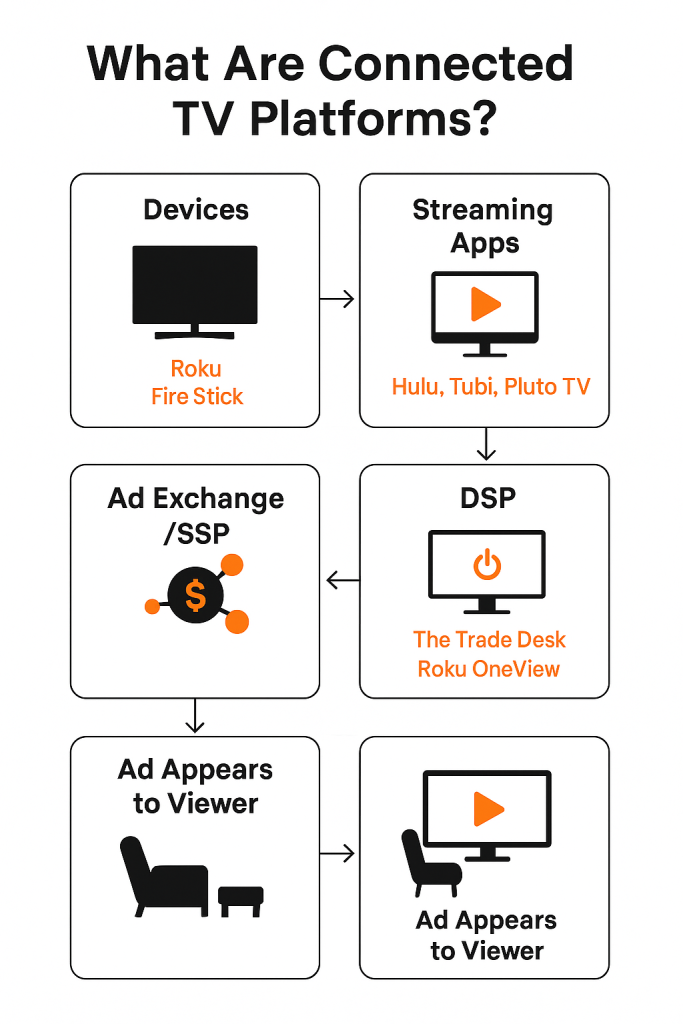
OTT (Over-the-Top) content refers to streaming video that bypasses traditional cable. OTT is what you watch, and CTV is how you watch it, on a connected device.
Types of Connected TV Platforms You Should Know
- Streaming Platforms (Publishers)
A publisher in CTV is the app or content source where ads appear, like Hulu or Tubi. Some examples are:
- Hulu—Ad-supported tier with premium content and brand safety
- Pluto TV—free and diverse, with 250+ live channels
- Tubi—Cost-effective, strong multicultural reach
- YouTube TV—Combines streaming and live content
- Device Ecosystems
These include both the hardware (like a Roku stick) and the software that runs streaming apps.
- Roku—Leading U.S. footprint, with advanced targeting
- Amazon Fire TV – Integrates shopper data; ideal for retail brands
- Apple TV – Premium users, smaller ad market
- Aggregators & Programmatic Platforms
- Programmatic advertising is an automated way to buy digital ads using smart software.
- The Trade Desk, Magnite – Tech-first solutions allowing unified buys across platforms.
- A Supply-Side Platform (SSP) helps publishers manage their ad space and sell it to advertisers through real-time auctions.
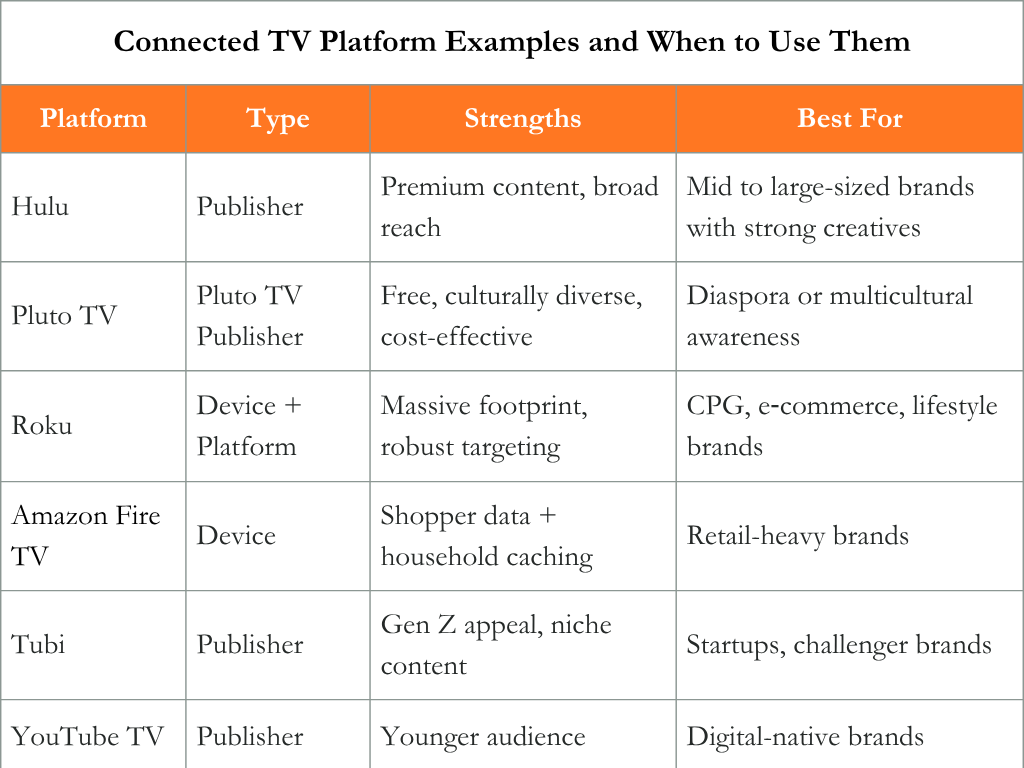
Find this valuable?
Read this as well: What is the New SEO Strategy in the face of AI overview chatbots?
Why CTV Is Gaining Ground
CTV’s rise reflects real shifts in media engagement and advertising investment:
- Streaming accounts for 46% of total U.S. TV viewing as of June 2025, surpassing cable and broadcast for the first time
- “Gauge” data from Nielsen confirmed a 44.3% streaming share in May 2025, showing consistency month over month.
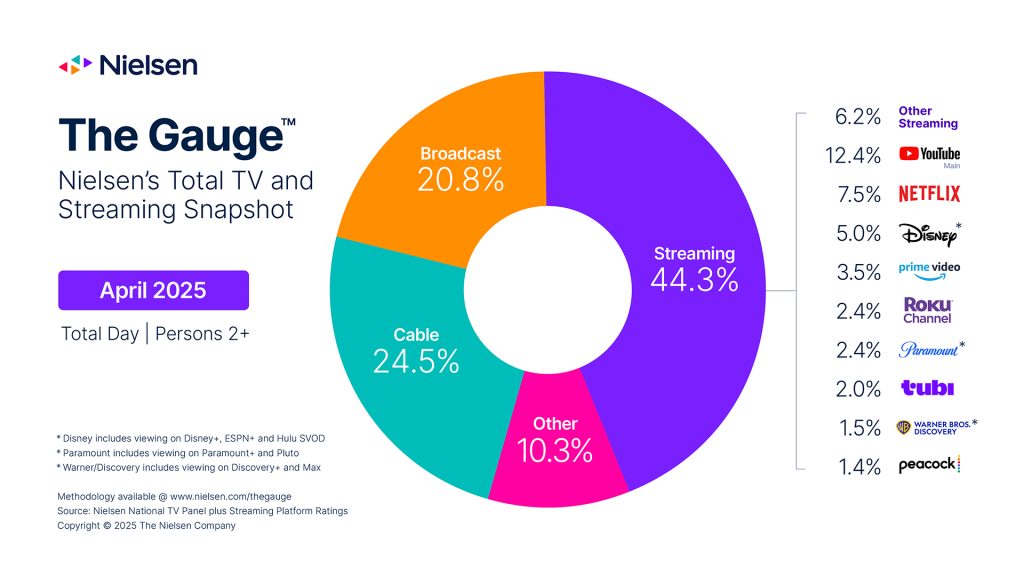
U.S. CTV ad spend is projected at $33.35 billion in 2025, growing to $46.89 billion by 2028 (emarketer.com)
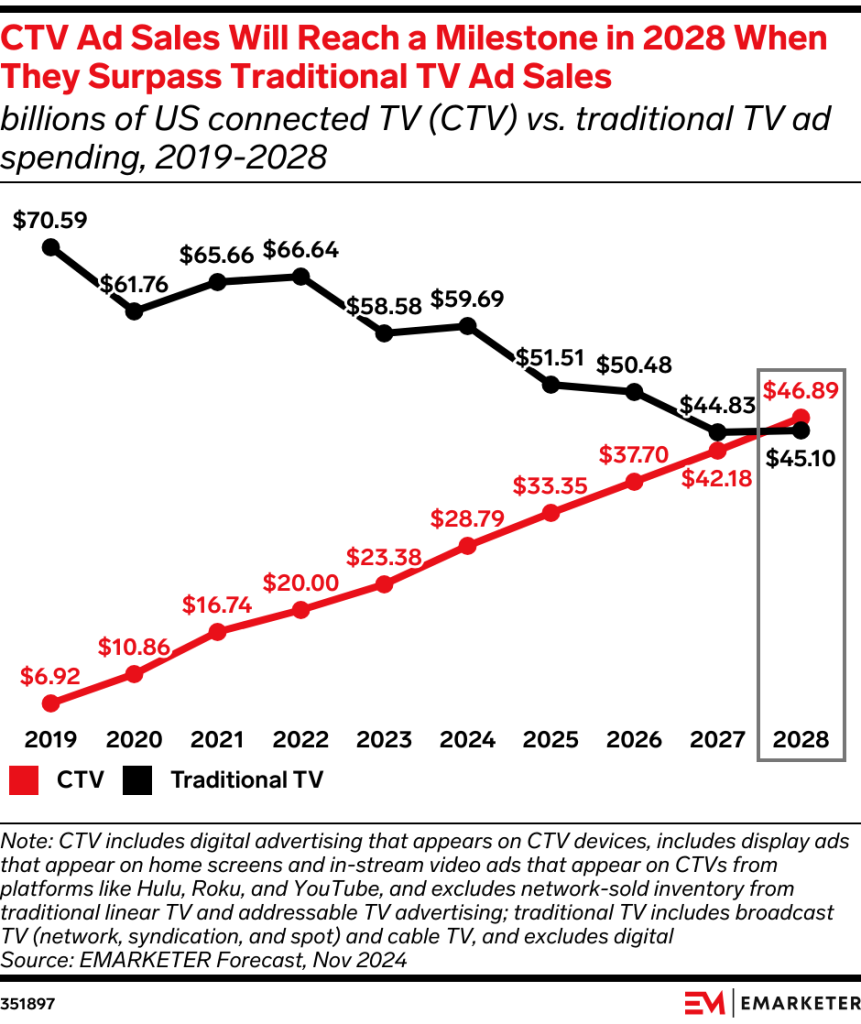
YouTube is responsible for 12.4% of U.S. TV viewing, highlighting the shift of traditional “online” platforms to the TV screen.
These numbers show evolving viewer habits and advertisers’ preference for measurable, full-screen video environments.
Planning to start a marketing campaign? Read How to Create a 360 Marketing Plan
How CTV Platforms Actually Deliver Ads
Let’s break down what happens behind the scenes.
When you run a CTV campaign, your video ad doesn’t just magically appear on a streaming platform. It goes through a smart, automated process called programmatic advertising, which helps decide where your ad shows up, who sees it, and when.
At the center of this process is a tool called a DSP, short for Demand-Side Platform.
A DSP is a software platform that allows advertisers (or agencies) to buy video ad space across multiple streaming platforms like Hulu, PlutoTV, or Roku in real time.
Think of it like a high-tech dashboard that manages your campaign:
- It picks the right audience (age, location, interest, device)
- Chooses the best inventory (the shows or apps where your ad appears)
- Tracks performance (how many people saw or completed your ad)
An Ad inventory is the available ad slots during TV content (like commercial breaks on Hulu).
Here’s how the process flows:
- Your ad campaign is uploaded into a DSP, such as The Trade Desk or Roku’s OneView.
- The system uses your targeting settings to bid for ad slots across CTV platforms automatically.
- If your bid wins, the ad is instantly inserted into the viewer’s stream, usually during an ad break.
- Your ad plays full-screen, non-skippable, often in a shared living room environment.
- The system tracks who saw the ad, how long they watched, and what device they used, giving you rich insights to optimize future campaigns.
A non-skippable ad must be watched to the end before the viewer can continue watching their content. On CTV, most ads are like this.
An impression is counted every time your ad is shown on a screen, while a view-through rate (VTR) shows how many people actually watched the full ad.
Why Use Pandora Global Agency?
Most small-to-mid-sized brands don’t have direct access to DSPs, as they’re designed for large advertisers or specialised agencies. That’s where Pandora Global Agency comes in.
We:
- Manage the entire DSP process for you
- Optimize your campaign based on real data
- Access premium ad inventory across Hulu, PlutoTV, Roku, and more
- Ensure your message reaches the right diaspora audiences across cities and streaming devices
Put simply: We take the complexity off your plate and turn Connected TV into a smart, ROI-driven media channel for your brand.
If you are enjoying this, you might also be interested in why Pandora is the top digital marketing agency in Nigeria and the best choice for your brand.
Why Platform Choice Matters
When designing a CTV campaign, focus on:
- Audience Behaviour—Different platforms attract distinct demographics and content preferences.
- Campaign Objective—Is this goal awareness, premium brand lift, or direct response?
- Performance Trade-offs—Cost, creative specs, frequency caps, and ad experience.
- Geographic & Cultural Fit—Especially for diaspora-targeted campaigns, choose platforms with diverse content and coverage in target markets.
A frequency cap limits how often your ad is shown to the same viewer. This helps prevent your ad from appearing too frequently and causing fatigue.
Final Thoughts
Connected TV platforms are strategic choices. The right mix enables brands to reach audiences with clarity, consistency, and context. Today’s top brands don’t just advertise; they choose environments that align with their identity and message.
Not sure about how to start? You’re not alone. Pandora breaks down everything step-by-step and builds media strategies suitable for you.
Ready to Build a Smart CTV Plan?
Book a CTV Strategy Session with the Pandora’s team.
Frequently Asked Questions (FAQs)
What is a CTV platform?
A platform that delivers streaming content to TVs and enables advertisers to run video ads within that environment.
What’s the difference between Roku, Hulu, and Fire TV?
Roku and Fire TV are hardware ecosystems with programmatic control; Hulu is a content publisher; each plays a distinct role.
Which platform suits African brands targeting the diaspora?
Start with platforms offering strong multicultural programming (like PlutoTV), then layer broader reach with devices like Roku or Fire TV.
How do I start advertising on these platforms?
Plan using a DSP, define your audience (geo, content, demographic), and launch across targeted platforms managed by agencies like Pandora.


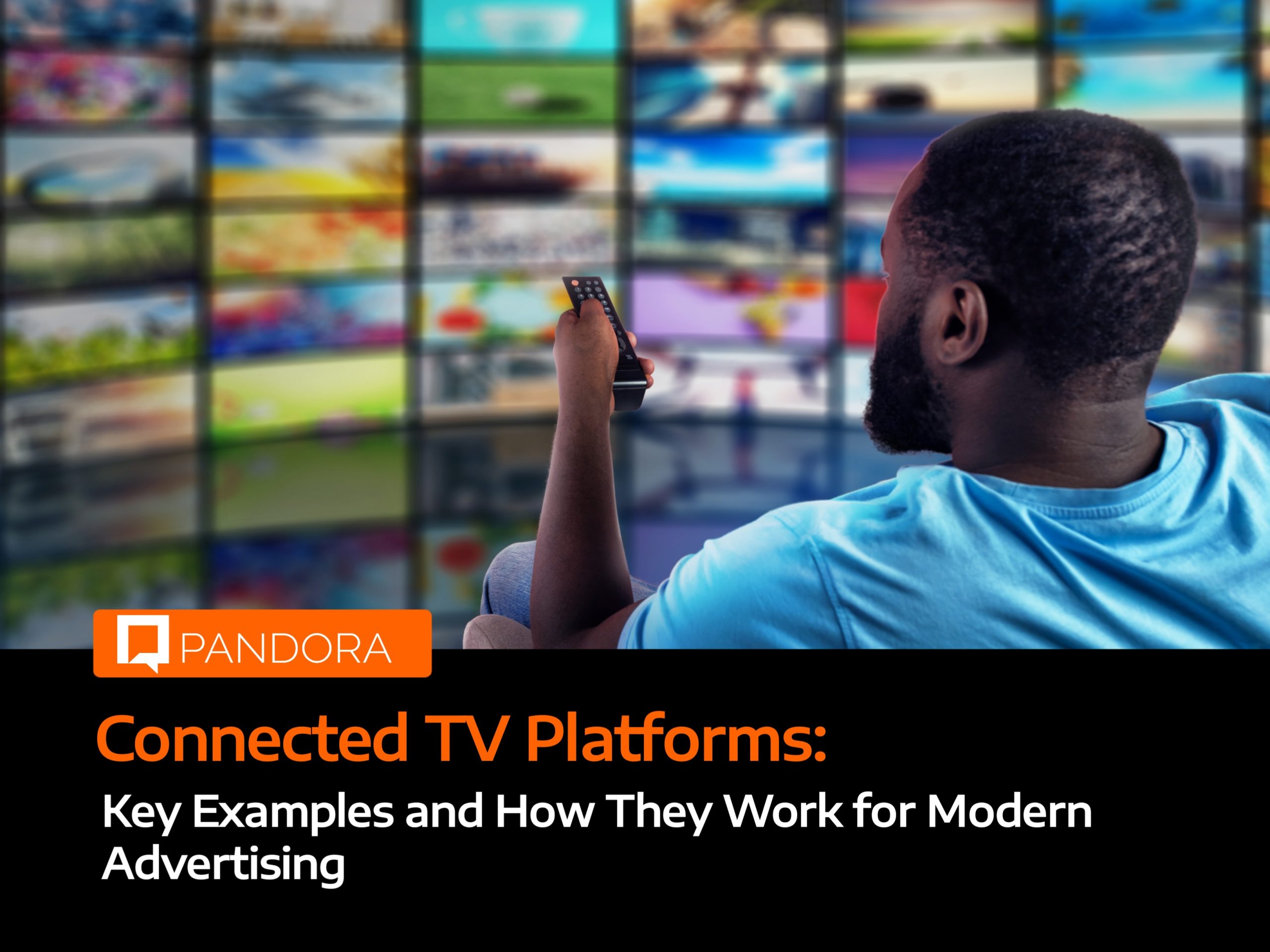



Leave a Reply